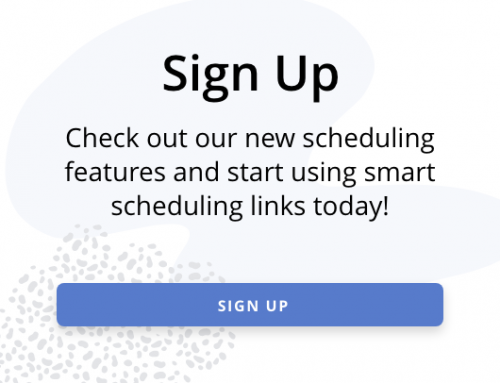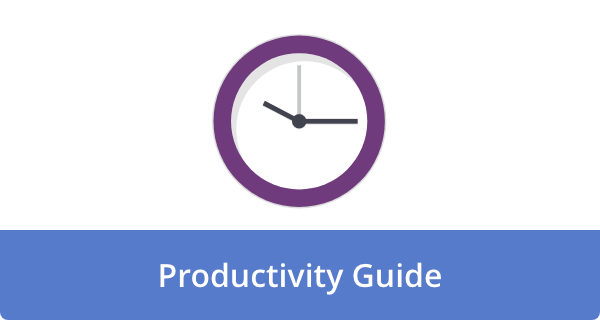

If you’ve ever glared at your to-do list and thought, “I don’t care anymore,” you’re not alone. When you’re burnt out, bored, or exhausted, even the simplest tasks may seem monumental. Unfortunately, productivity advice assumes we’re motivated, go-getters who are ready to maximize every second of every day. But what if you’re… over it?
When you’re chronically over it — tired of the grind, burned out, or just plain exhausted-you need something more than traditional time management systems. Bullet journals and color-coded calendars sound great in theory, but when you’re empty, they become just another chore.
The good news? A better way exists.
So, if you’re overworked, overstressed, and over it, here is the no-nonsense, judgment-free guide to getting things done.
1. Lower the bar — for now.
It’s time to do something radical: Stop trying to do everything.
In many cases, people feel “over it” because they carry an impossible mental strain. Though it’s easy to become overwhelmed by work tasks, family obligations, social expectations, and personal goals.
As such, don’t be afraid to lower the bar. It doesn’t mean giving up. Instead, it means adjusting expectations according to your current energy levels.
You might want to ask yourself;
- Is there anything that needs to be done today?
- If I let this go, postponed it, or simplified it, what would happen?
When everything seems important, nothing gets done. So, keep your list to the essentials, then move on to the rest.
2. Use the “one thing” rule.
When your brain is foggy, or your motivation has disappeared, complex systems won’t help. Instead, you need simplicity. It’s here that the “One Thing Rule” comes into play;
Ask yourself each morning: What can I do today to make everything else easier or less urgent?
Before reading your emails, checking social media, or distracting yourself, do that one thing. By focusing on one task at a time, you can cut through overwhelm and get a quick win, sparking momentum for the rest of the day. In the end, you’ve moved the needle where it counts, even if you didn’t do anything else.
3. Embrace “half-finished” progress.
When you’re running low on energy, perfectionism can be your worst enemy. Putting off a project until you have the perfect moment, the perfect energy, or the perfect mood is not a good idea.
Rather than striving for completeness, aim for “half-finished” progress;
- Initially, write a messy draft.
- Instead of writing the entire report, sketch the outline.
- Don’t worry about the wording of the email.
Any progress, no matter how sloppy or imperfect, builds momentum. Further, it’s better to finish half of a project than not start one at all.
4. Time block…gently.
While time blocking is a powerful tool, it can be difficult to use when motivation levels are low. Rather than scheduling every minute, try gentle time blocks that give your day shape without suffocating flexibility.
For example:
- Morning (9–11 AM): Focus time (One Thing task)
- Midday (11 AM–2 PM): Admin tasks, emails, light work
- Afternoon (2–4 PM): Meetings, collaborative work
- Late afternoon (4–5 PM): Wrap-up and planning
This is just scaffolding, so you don’t have to follow it to a tee. But it’s wise to give your day a broad structure to avoid decision fatigue while still leaving room for your feelings at the time.
5. Build micro-rituals of motivation.
Often, it’s small sparks that reignite motivation when you’re chronically over it.
Try adding micro-rituals to your daily routine that boost your energy, such as;
- Sipping on your favorite coffee or tea before work
- Listening to an upbeat song before tackling a tedious task
- Stretching or walking for five minutes between tasks
- Consider lighting a candle or changing the atmosphere of your workspace
You can use these small signals to tell your brain it’s time to shift gears. With time, these rituals can become powerful cues that help you get into work mode, even when you’re feeling uninspired.
6. The power of the “done list.”
When your motivation is tanking, it’s easy to focus on everything you haven’t accomplished. That’s where a Done List can help.
Whether it is a big or small accomplishment, always write it down at the end of the day (or mid-day):
- Responded to 3 emails.
- Made a difficult phone call.
- Took a walk at lunch.
- Read 5 pages of a book.
By focusing on what you’ve accomplished rather than what’s left, you can reenergize your efforts.
7. Reward tiny wins.
There’s nothing worse than being over it and waiting for significant milestones that seem hopelessly far away. Instead, set micro-rewards for micro-wins.
A few examples:
- Finish a report → Take a 15-minute sun break
- Send five difficult emails → Grab your favorite snack
- Tidy your workspace → Watch a short, funny video on Instagram
Dopamine, the chemical linked to rewards, is craved by the brain. When you reward yourself for completing a task, you train your brain to associate work with positive feelings.
8. Set boundaries like your sanity depends on it — because it does.
People often become chronically over it due to saying “yes” to too much for too long. The result? Exhaustion, disengagement, and resentment.
There is more to time management than just what you do. It’s about what you don’t do as well.
By setting more precise boundaries, you can:
- Rejecting requests with low priority.
- Disabling notifications during focus periods.
- Establish a consistent time for the end of your workday.
- No emails and no exceptions on days off.
You aren’t selfish by protecting your time. You have to do it to stay sustainable.
9. The 15-minute rule for overwhelm.
Use the “15-Minute Rule” whenever a task seems too big, daunting, or simply too much to begin. Give yourself 15 minutes to work on that task.
Get started by setting a timer, limiting distractions, and diving in. As soon as the timer goes off, you have two options;
- After making some progress, stop immediately.
- If you feel a surge of momentum, continue.
In many cases, the hardest part is just getting started. By removing the pressure of completing the entire task, it becomes less overwhelming and more manageable. Sometimes 15 minutes can turn into 30 or 60 minutes, and you might be surprised at how much you accomplish.
10. Implement the “energy audit.”
As the primary resource, time is the focus of traditional time management. When you’re chronically exhausted, energy is your most valuable resource.
As part of an energy audit, you track your energy levels throughout the day as well as the tasks you perform. If you can spare a few days or a week, note;
- What time of day do you feel the most energized and focused?
- Are there any activities or interactions that drain your energy?
- Is there anything that makes you feel energized?
By scheduling demanding tasks at peak energy times, you can delegate low-energy tasks to periods when your tank is naturally lower. As a result, you won’t burn out as much, as you’ll be working with your natural rhythms, not against them.
11. Give yourself grace.
There’s no denying that some seasons of life are harder than others. You might be juggling too many things. Maybe you’re grieving, burned out, or just done. It’s okay that productivity isn’t always the top priority.
Allow yourself to;
- Take mental health days.
- Work at 60% capacity if that’s all you’ve got.
- Adjust your goals without guilt.
To manage your time effectively, you need to be compassionate towards yourself. Despite what you may think, you’re not a machine, and you don’t need to be.
Quick Recap: Time Management for the Over-It Crowd
In case you’re feeling “I just can’t,” here’s your cheat sheet;
- Lower the bar. Do less, not more.
- One Thing Rule. Pick one priority and do it first.
- Half-finished counts. Start messy. Perfect later.
- Gentle time blocks. Structure without rigidity.
- Micro-rituals. Small sparks for motivation.
- Done List. Track what’s completed, not just what’s left.
- Reward tiny wins. Celebrate even a little progress.
- Set boundaries. Protect your time fiercely.
- 15-Minute Rule. Just start with a short burst.
- Energy Audit. Align tasks with your natural energy levels.
- Give yourself grace. It’s okay not to be at 100%.
Final Thought: It’s Okay to Be Over It—But Don’t Stay Stuck There
We all hit walls from time to time. Occasionally, motivation dries up. To move forward, though, you must find ways to do so slowly, gently, and compassionately for yourself.
Having good time management does not mean becoming a superhuman productivity robot. It’s all about creating systems that work for you, even on the days when you don’t feel like working.
FAQs
What’s the most significant difference between this approach and traditional time management?
The assumption is that the biggest difference between the two approaches. Traditionally, time management presumes high motivation and focuses on maximizing output. Using this “over-it” approach, you can acknowledge low motivation and prioritize sustainable progress along with self-compassion by reducing expectations, simplifying tasks, and focusing on energy management. Rather than working against your current state, you should work with it.
How do I know if I’m “chronically over-it” or just procrastinating?
Procrastination can be a symptom, but being chronically over it goes deeper. You may feel exhausted, mentally drained, lack interest in tasks you once enjoyed, and feel so overwhelmed that starting or continuing work is impossible. When motivation tricks fail to work and you feel apathy towards your responsibilities, perhaps you are over it.
Can I use these tips if I have a demanding job or tight deadlines?
Yes, absolutely.
Adaptability is the key to these tips. Even with a demanding schedule, you can implement micro rituals, apply the 15-Minute Rule, or practice gentle time blocking to bring some structure without rigid pressure. While you might not have the ability to overhaul your entire day, the key is to focus on the smallest leverage points.
How long does it take to see results from this approach?
After implementing a few of these strategies, especially lowering the bar or using the One Thing Rule, you might notice that your mindset and energy change almost immediately. When applied consistently over a few weeks or months, you’ll notice significant changes in your productivity, stress levels, and working relationship.
What if I try these tips and still feel completely stuck?
If you implement these strategies consistently but still feel completely stuck, you may require additional assistance. In this case, you might want to talk with your therapist about burnout, depression, or underlying stressors. In addition, you should consider whether your current workload or life circumstances are sustainable over time. It may be necessary to make fundamental changes beyond time management tactics.
Image Credit: Tara Winstead; Pexels











John Rampton
John’s goal in life is to make people’s lives much more productive. Upping productivity allows us to spend more time doing the things we enjoy most. John was recently recognized by Entrepreneur Magazine as being one of the top marketers in the World. John is co-founder of Calendar.